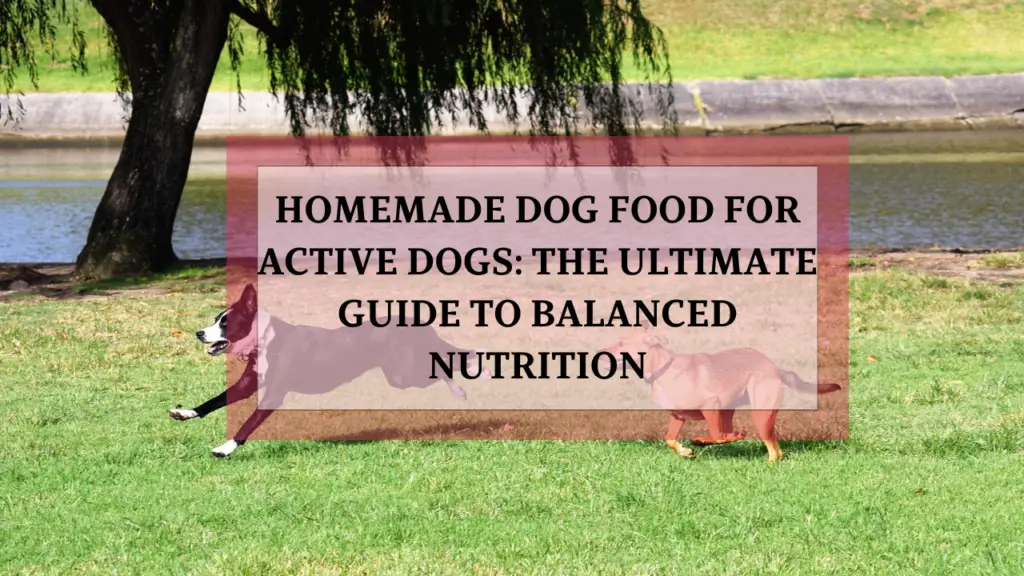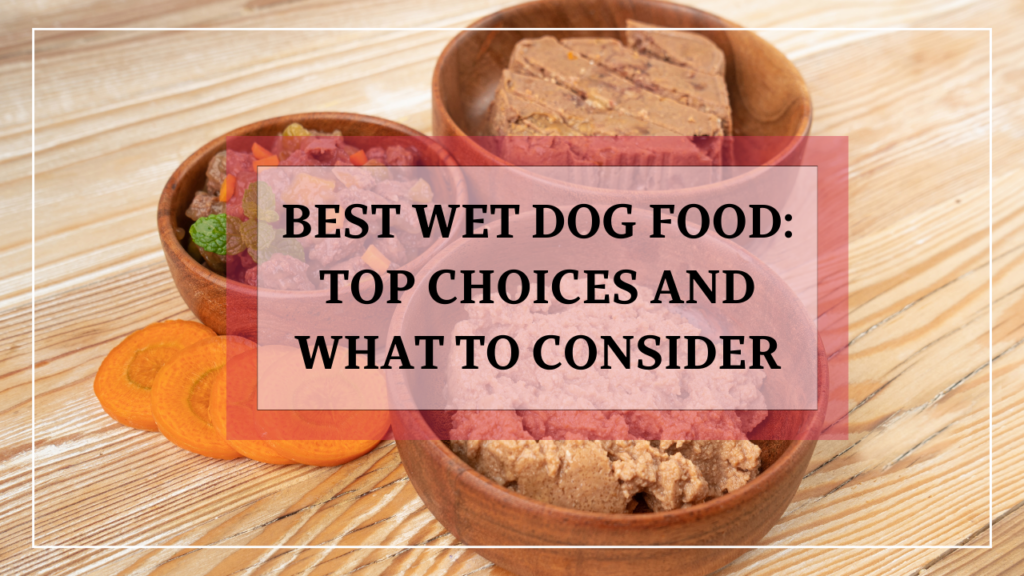Active dogs require a nutrient-dense, high-energy diet to fuel their adventures, whether they’re agility competitors, working dogs, or just energetic family pets. While commercial dog food provides convenience, it often lacks the customization and quality control that homemade dog food offers.
In this guide, we’ll explore everything you need to know about homemade dog food for active dogs, including essential nutrients, meal planning, recipes, and common concerns. By the end, you’ll have the knowledge to create a balanced, nutritious diet tailored to your dog’s needs.
Why Active Dogs Need a Special Diet
Understanding the Nutritional Needs of Active Dogs
Dogs with high activity levels have different metabolic requirements compared to more sedentary pets. Their bodies need extra fuel to maintain endurance, build muscle, and recover quickly from physical exertion.
Key Nutritional Needs for Active Dogs:
- Protein: Essential for muscle repair and growth.
- Fats: Provide long-lasting energy.
- Carbohydrates: Support sustained activity.
- Vitamins & Minerals: Enhance recovery and immune function.
- Hydration: Prevents overheating and fatigue.
Common Health Risks for Active Dogs & How Diet Helps
Active dogs are prone to certain health concerns that proper nutrition can help prevent or manage:
- Joint Injuries: Omega-3 fatty acids and glucosamine support joint health.
- Muscle Fatigue: High-quality proteins aid in faster recovery.
- Dehydration & Overheating: Proper hydration and electrolyte balance reduce risks.
- Weight Fluctuations: A well-balanced homemade diet maintains optimal weight.
Benefits of Homemade Dog Food for Active Dogs
Why Choose Homemade Over Commercial Dog Food?
Commercial dog food often contains fillers, artificial preservatives, and low-quality protein sources. Homemade meals allow for:
- Ingredient Control: No artificial additives or harmful chemicals.
- Customization: Adjust macronutrients based on your dog’s activity level.
- Freshness & Quality: Whole, unprocessed ingredients provide superior nutrition.
Cost Comparison: Homemade vs. Store-Bought
| Factor | Homemade Dog Food | Commercial Dog Food |
|---|---|---|
| Ingredient Quality | High | Varies (often lower) |
| Customization | Fully adjustable | Limited |
| Cost per Meal | Moderate-High | Low-Moderate |
| Health Benefits | Optimal | Varies |
While homemade dog food may require more effort and upfront costs, the long-term health benefits outweigh the drawbacks.
Essential Nutrients for Active Dogs
Protein Sources for Muscle Growth and Recovery
Protein is crucial for active dogs to maintain lean muscle mass and repair tissues after intense exercise.
Best Protein Sources:
- Animal-Based: Chicken, beef, turkey, fish, eggs.
- Plant-Based: Quinoa, lentils, chickpeas (should be supplemented with animal proteins).
- Daily Protein Requirements: 25-30% of daily caloric intake.
Healthy Fats for Energy and Joint Health
Fats are a concentrated energy source, vital for endurance and joint lubrication.
- Omega-3 Sources: Salmon, flaxseed, fish oil.
- Healthy Fats: Coconut oil, olive oil, animal fats.
- Daily Fat Requirements: 15-20% of daily caloric intake.
Carbohydrates for Sustained Energy
Unlike humans, dogs don’t require high-carb diets, but for active dogs, complex carbs provide sustained energy.
- Best Carbs: Sweet potatoes, brown rice, oats.
- Avoid: White rice, processed grains.
Vitamins and Minerals for Optimal Performance
- B Vitamins: Improve energy metabolism (found in meat, eggs, and whole grains).
- Vitamin E & C: Act as antioxidants, reducing muscle damage.
- Calcium & Magnesium: Strengthen bones and prevent injuries.
How to Make Homemade Dog Food for Active Dogs
What Ingredients to Include
- Proteins: Chicken, beef, turkey, fish.
- Carbs: Brown rice, quinoa, oats.
- Healthy Fats: Fish oil, olive oil, coconut oil.
- Veggies: Carrots, spinach, pumpkin.
- Fruits: Blueberries, apples (without seeds).
Ingredients to Avoid
- Toxic Foods: Onions, garlic, chocolate, grapes.
- Excess Salt & Sugar: Leads to dehydration and obesity.
Portion Sizes and Meal Planning
Active dogs need larger portion sizes compared to sedentary dogs.
- Small Dogs (20-30 lbs.): ~500-700 kcal per day.
- Medium Dogs (30-60 lbs.): ~900-1,200 kcal per day.
- Large Dogs (60+ lbs.): ~1,500-2,000 kcal per day.
Best Homemade Dog Food Recipes for Active Dogs
High-Protein Beef and Sweet Potato Recipe
- 2 lbs lean ground beef
- 1 cup cooked sweet potato
- 1 cup cooked quinoa
- 1 tbsp fish oil
Nutritional Breakdown: High protein, moderate fat, complex carbs.
Energy-Boosting Chicken and Brown Rice Recipe
- 2 lbs chicken breast
- 1.5 cups brown rice
- 1 cup spinach
- 1 tbsp olive oil
Why It’s Great: Balanced macronutrients for sustained energy.
Omega-3 Rich Salmon and Quinoa Recipe
- 2 lbs salmon
- 1 cup quinoa
- 1 cup peas
- 1 tbsp flaxseed oil
Benefits: Supports joint health and brain function.
DIY Meal Toppers for Extra Energy
- Bone Broth: Boosts hydration and supports joint health.
- Egg & Yogurt Mix: Extra protein and probiotics.
Common Questions About Homemade Dog Food for Active Dogs
Is Homemade Food Better Than Kibble for Active Dogs?
Yes! Homemade food contains fresher ingredients, better protein sources, and no fillers.
Can I Feed My Active Dog a Raw Diet?
Raw diets can be beneficial but require careful balancing to prevent deficiencies.
How Do I Transition My Dog to Homemade Food?
- Week 1: 25% homemade, 75% kibble.
- Week 2: 50% homemade, 50% kibble.
- Week 3: 75% homemade, 25% kibble.
- Week 4: 100% homemade.
Do Active Dogs Need Supplements?
- Yes: Fish oil, glucosamine, probiotics, and multivitamins help fill gaps.
How Do I Know If My Dog’s Diet Is Balanced?
- Signs of Deficiencies: Lethargy, dull coat, weight loss.
- Vet Checkups: Every 6 months to monitor health.
Final Thoughts on Homemade Dog Food for Active Dogs
Feeding homemade dog food for active dogs ensures they get the highest-quality nutrition tailored to their needs. With proper planning, your active dog will thrive on a balanced, home-cooked diet.



